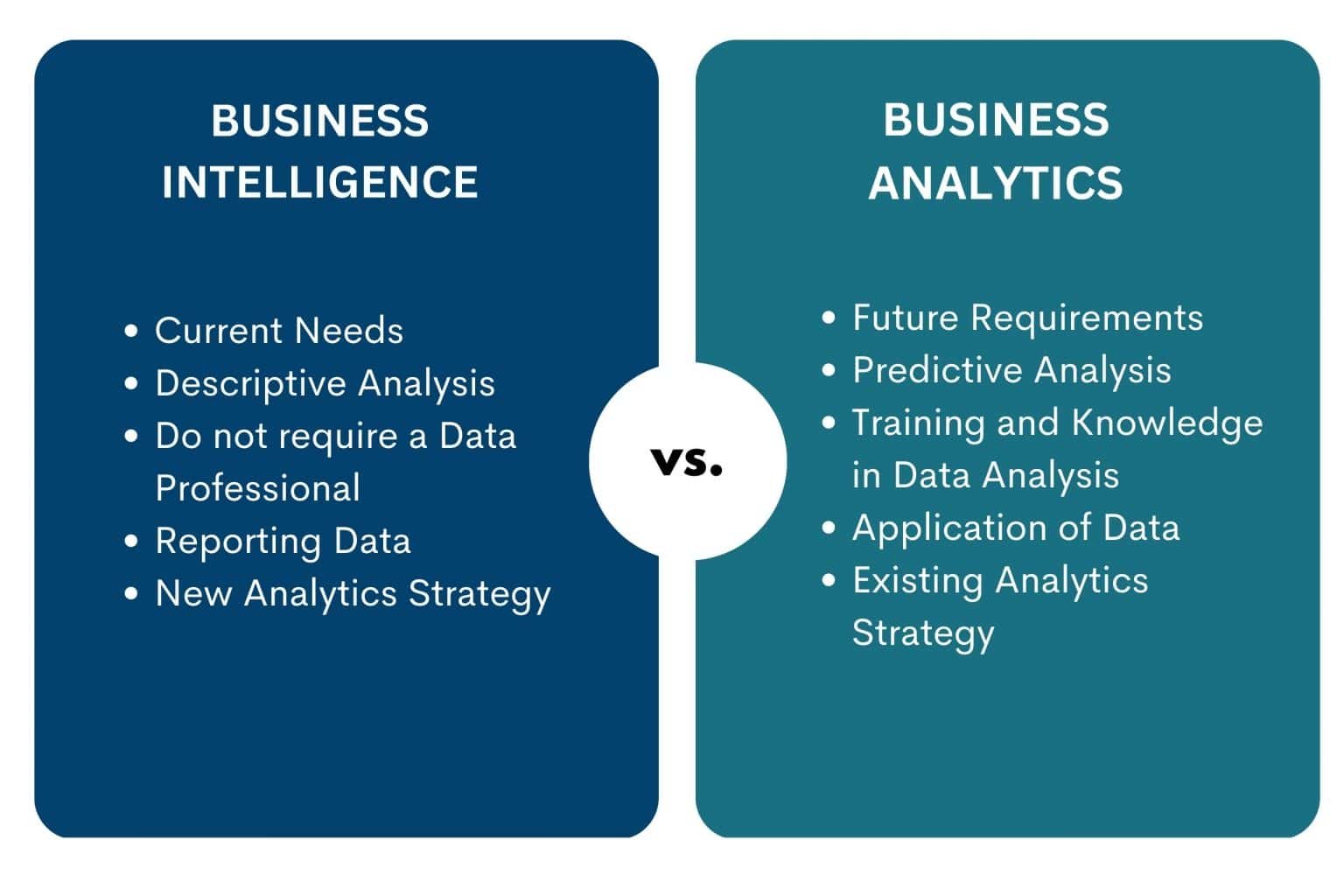In today’s data-driven business world, organizations are constantly seeking ways to gain a competitive edge and make informed decisions. Two terms that are often used interchangeably, but have distinct meanings, are Business Intelligence (BI) and Business Analytics (BA). While both concepts involve working with data, they serve different purposes and have different goals. In this article, we will explore the differences and similarities between Business Intelligence and Business Analytics, and provide guidance on how to choose the right approach for your organization.

What is Business Intelligence?
Business Intelligence refers to the process of collecting, analyzing, and presenting data to help organizations make better decisions. It involves using various tools and technologies to extract insights from data, and to present them in a way that is easily understandable by stakeholders. The primary goal of Business Intelligence is to provide historical and current data to support decision-making, and to identify trends and patterns that can inform future strategies.
Business Intelligence typically involves the following activities:
- Data Collection: Gathering data from various sources, such as databases, spreadsheets, and external data sources.
- Data Analysis: Using various techniques, such as reporting, data visualization, and statistical analysis, to extract insights from the data.
- Data Presentation: Presenting the insights in a way that is easily understandable by stakeholders, using reports, dashboards, and other visualization tools.
What is Business Analytics?
Business Analytics, on the other hand, involves using statistical and mathematical techniques to analyze data and drive business decisions. It goes beyond the descriptive analytics of Business Intelligence, and involves predictive and prescriptive analytics to forecast future outcomes and recommend actions.
Business Analytics typically involves the following activities:
- Descriptive Analytics: Analyzing historical data to understand what happened.
- Predictive Analytics: Using statistical models and machine learning algorithms to forecast what may happen in the future.
- Prescriptive Analytics: Using optimization techniques and simulation models to recommend actions that can be taken to achieve a desired outcome.
Key Differences between Business Intelligence and Business Analytics
While both Business Intelligence and Business Analytics involve working with data, there are several key differences between the two:
- Purpose: The primary purpose of Business Intelligence is to provide historical and current data to support decision-making,"
standardally’t_code of") the # += ")
** = (
")
Closure
Thus, we hope this article has provided valuable insights into Business Intelligence vs Analytics: Understanding the Differences and Similarities. We thank you for taking the time to read this article. See you in our next article!